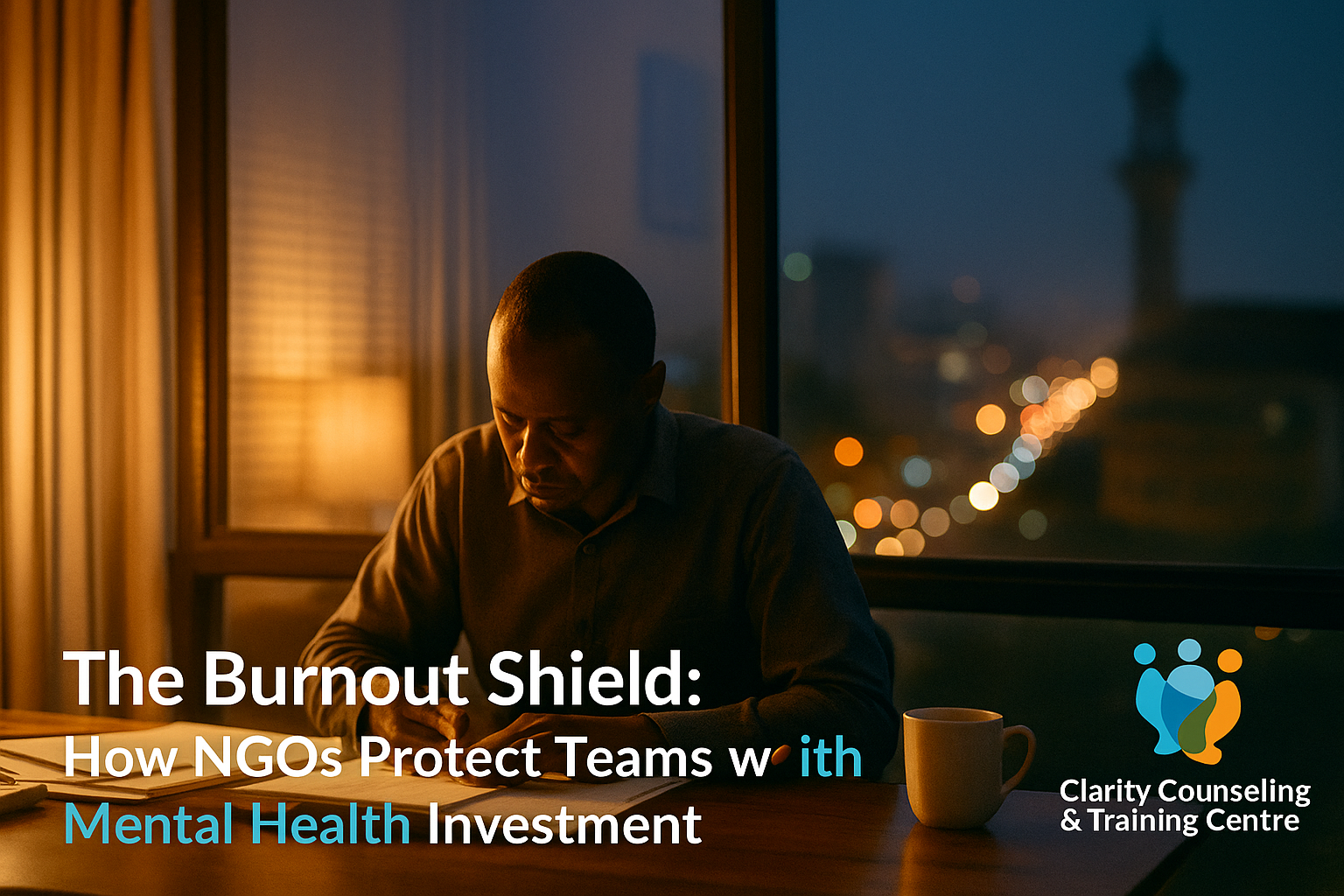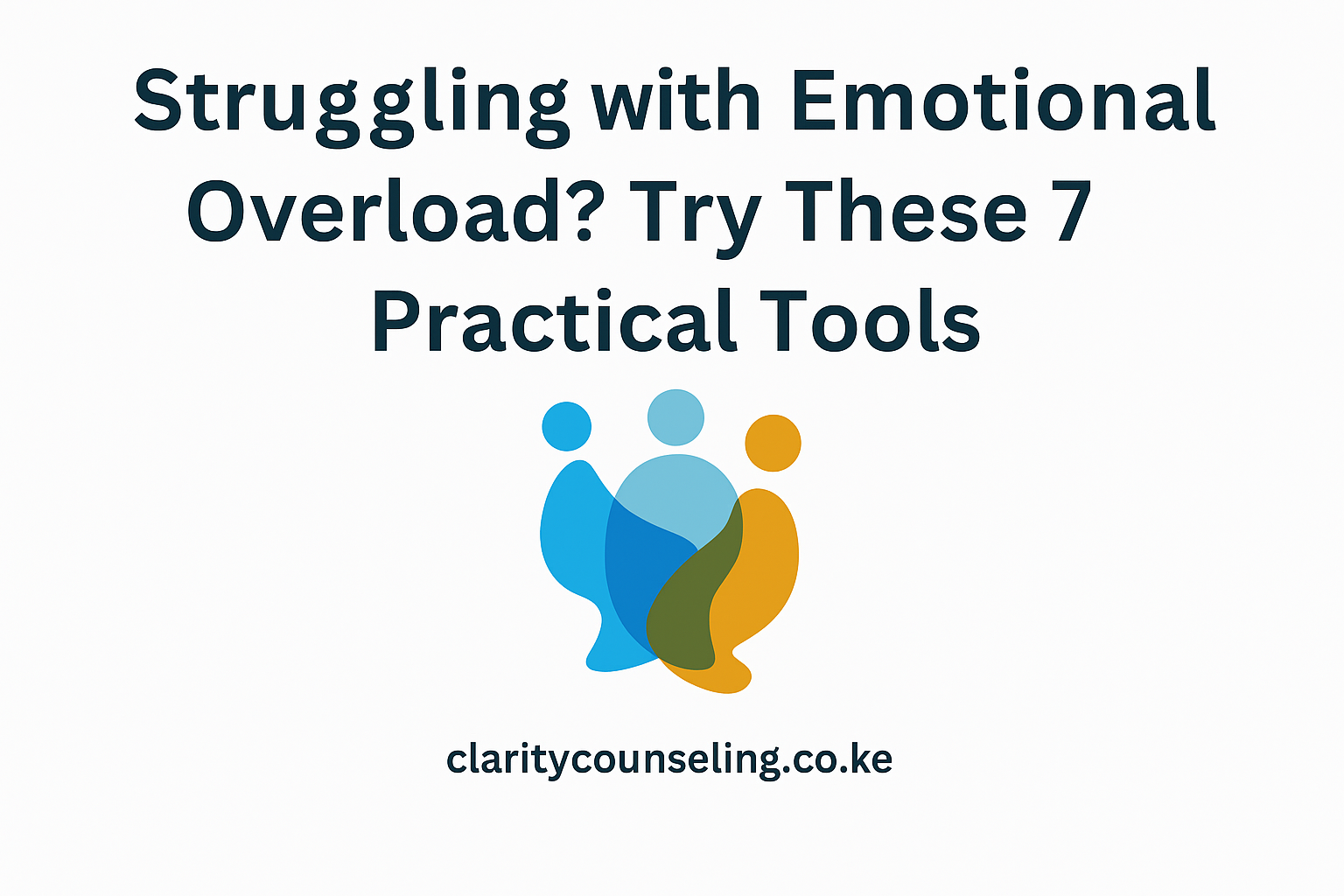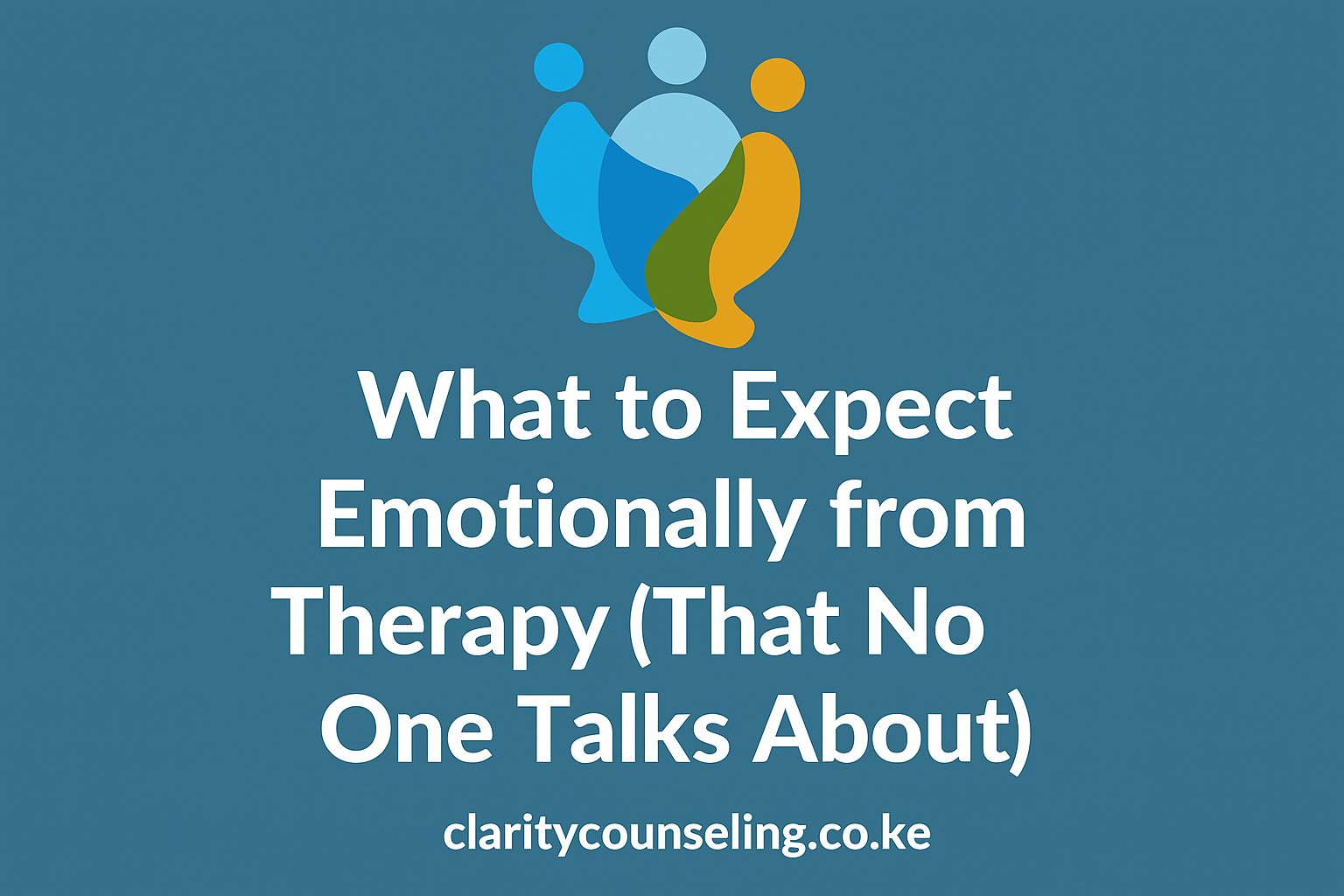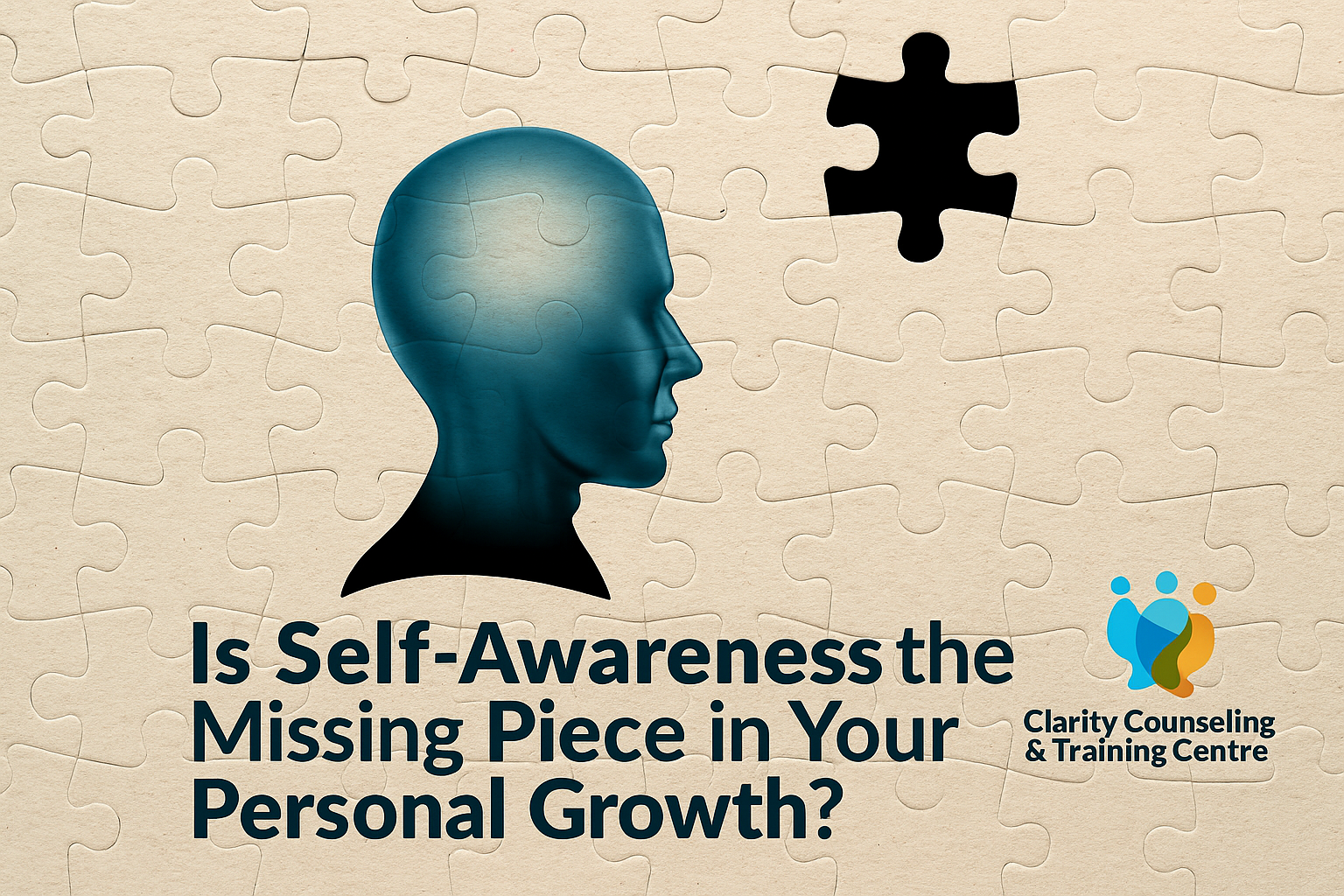5 Therapy Hacks That Stop Burnout for Stronger Teams and Happier Staff
The office is quiet. Too quiet and it’s only 7:45 a.m. Desks gleam with untouched stationery, screens blink with unanswered notifications, and the faint smell of reheated tea lingers in the air.
Somewhere in the open-plan space, a nurse in the diaspora adjusts her mask before the first patient arrives. In another corner of the world, a project manager stares at a report he knows isn’t going to meet the deadline.
Across town in Nairobi, a teacher flips her empty coffee cup, thinking of the parent meeting she forgot to schedule. They’re all here, present, doing their jobs, yet carrying invisible loads, pockets of fatigue that no break seems to fix.
This is the quiet before burnout. And it’s happening faster than most realize. Unfortunately, burnout doesn’t announce itself with alarms. It whispers in sighs, in the way shoulders curl inwards, in emails that feel heavier than they should.
But there’s hope and therapists know that small, intentional actions stop the slow leak of emotional exhaustion. Here are five therapy-inspired hacks to help you reclaim energy, strengthen your team, and protect your emotional wellbeing, before the tipping point arrives.
1. Use Emotional Resets Like Pause to Recalibrate, Not Escape
By 10 a.m., the office is alive. Phones ring, keyboards clatter, and a sense of urgency vibrates through the air. Yet in the middle of it all, your body is whispering a different truth: I’m tired.
Most of us respond by pushing harder or checking social media “for a break.” But therapists call this avoidance, not restoration. The difference lies in recalibration.
A true emotional reset takes ten minutes:
- Step away from your screen
- Breathe slowly
- Stretch your neck
- Or feel the sun on your face
The goal is to reset your nervous system, not distract it.
Try this: set a gentle alarm every 90 minutes that simply says, “Pause.” Close your eyes. Notice your body. Release the tension in your jaw, shoulders, and back. Even two minutes can recalibrate the mind and prevent small stresses from snowballing.
It’s subtle, but consistent resets are the difference between finishing your day drained and finishing it present.
2. Micro-Team Check-Ins for Emotional Temperature, not Performance Reports
By noon, the office is buzzing. Teams are moving between calls and meetings, everyone focused on deliverables. Yet underneath, anxiety is pooling quietly. As the HR officer, you notice one colleague is unusually silent. Another looks tense over their screen.
Instead of letting it fester, you introduce the team to micro emotional check-ins: one word per person, describing how they feel.
- “Tired,” says one.
- “Overwhelmed,” another whispers.
- A pause. Then the team exhales collectively.
Therapists know that naming emotions reduces their intensity. When teams practice acknowledging feelings, even briefly, they create psychological safety. Tension softens, communication improves, and small conflicts don’t escalate into burnout triggers.
These moments don’t have to take more than sixty seconds, but they ripple through the day. The result, people feel seen, not just managed.
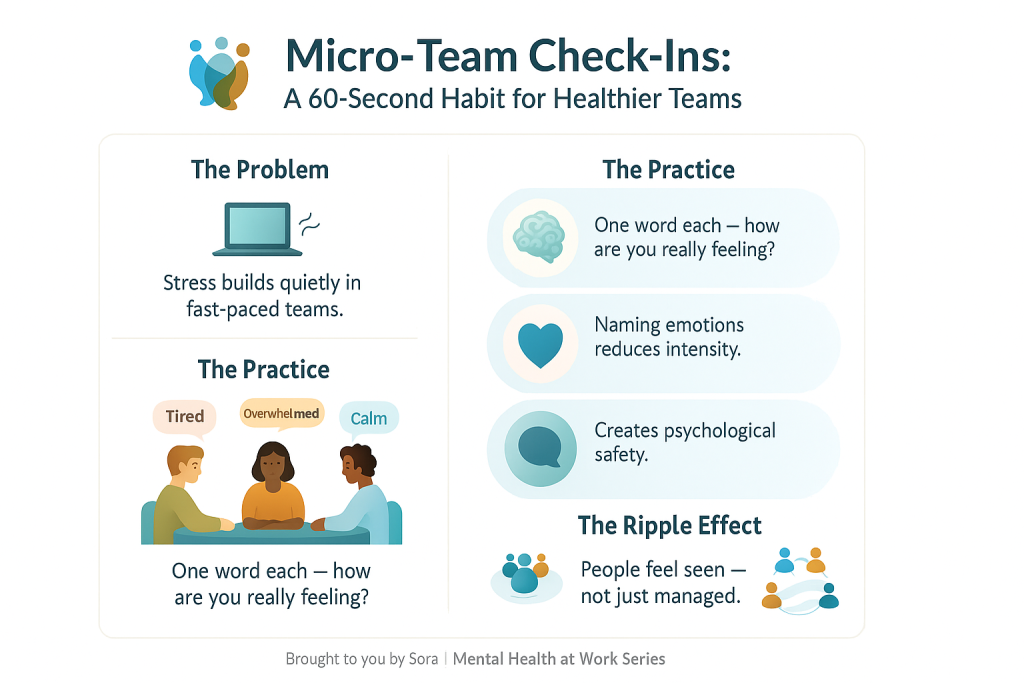
3. Boundaries That Protect Without Alienating
In many Kenyan workplaces, saying “no” is seen as a weakness. But compassion without limits is exhaustion waiting to happen. Imagine a teacher staying after school every evening, a nurse taking on every extra shift, a manager absorbing all complaints. They care, but they burn.
Therapy teaches boundaries as bridges, not walls. Boundaries preserve energy while keeping relationships intact.
Try this simple approach:
“I want to help, but I can’t take this on today. Can we revisit it tomorrow?”
Notice the difference. You haven’t shut the door; you’ve protected your capacity. And when colleagues see that you value your energy, they begin valuing theirs too. Boundaries are not rejection but the blueprint for sustainable empathy.
4. Emotional Labeling: Stop Absorbing, Start Naming
By mid-afternoon, fatigue often feels contagious. You’ve taken on a colleague’s stress, a client’s frustration, and maybe even your own unprocessed emotions. It can feel like you’re drowning.
Therapists address this with emotional labeling: noticing what you feel and distinguishing it from what belongs to others. At day’s end, reflect:
- What am I feeling?
- Which emotions belong to me, and which can I let go?
For instance, the HR officer who carries every complaint might say: “I’m frustrated, but this isn’t mine to fix.” Naming emotions prevents emotional overloading. It turns chaos into clarity and allows rest to be restorative instead of guilt-laden.
Emotional labeling is simple but revolutionary: it teaches that your inner world deserves attention before exhaustion claims it.
5. Micro-Moments of Joy: Small, Intentional Sparks
Finally, there is joy, and it’s often overlooked in the workplace.
For example, a surgeon shares a joke with her team after a long shift. A teacher hums a song while grading exams. A project manager steps outside for a single breath of sunshine. These are small, fleeting, subtle acts, yet they reset the nervous system in a way coffee cannot.
Therapists call these emotional correctives. Joy isn’t frivolous; it’s restorative. It reminds the body that life isn’t just about survival. So, try to weave three micro-moments of joy into your day:
- A laugh with a colleague
- A song that lifts your mood
- A moment in the sun
These acts, though small, act as anchors, preventing stress from tipping into exhaustion.

Gain the Power of Emotional Awareness at Work
Workplaces in Kenya, like anywhere, glorify hustle. But burnout isn’t a badge of honor; it’s a signal that emotional literacy is low. When we learn to pause, check in, set boundaries, label feelings, and invite joy, we transform the culture from the inside out.
Healing isn’t always about therapy sessions. Sometimes, it begins with noticing your body, naming your feelings, or sharing a moment of laughter with a teammate. It begins with small, intentional practices repeated consistently.
These five hacks don’t just prevent burnout, they build resilience, emotional intelligence, and team cohesion. They turn workplaces from silent pressure cookers into spaces where people feel safe, supported, and human.
FAQs
- What are early signs of burnout at work?
Irritability, fatigue, difficulty concentrating, cynicism, and emotional numbness are early signs.
- How can therapy principles help at work?
They teach emotional regulation, empathy, and boundaries , skills that reduce stress, improve communication, and strengthen teamwork.
- What’s the difference between stress and burnout?
Stress keeps you wired; burnout drains you. Stress can motivate. Burnout immobilizes.
- How can teams prevent burnout collectively?
Encourage emotional check-ins, realistic workloads, micro-moments of connection, and respect for boundaries.
- What can I do right now if I feel drained?
Pause, breathe, name your feelings, and release what doesn’t belong to you. Step outside, stretch, or find a brief joy moment, it’s restorative, not indulgent. Then book a therapy session to learn more and keep steady on this journey of becoming a better version of yourself. Won’t you?
